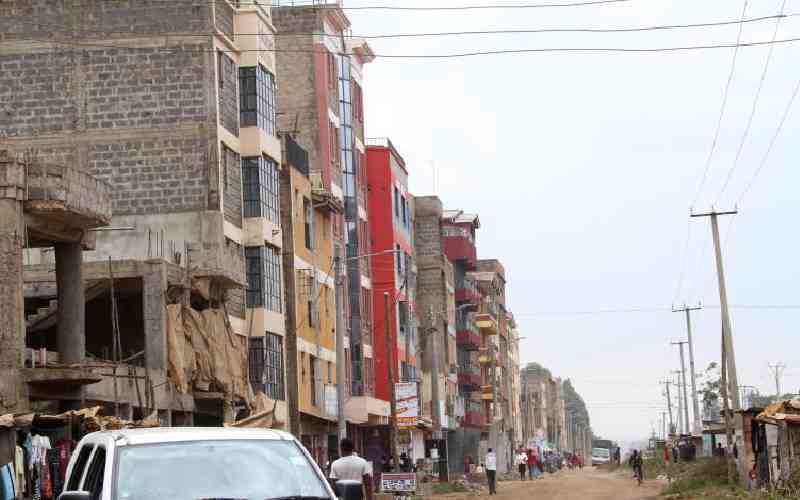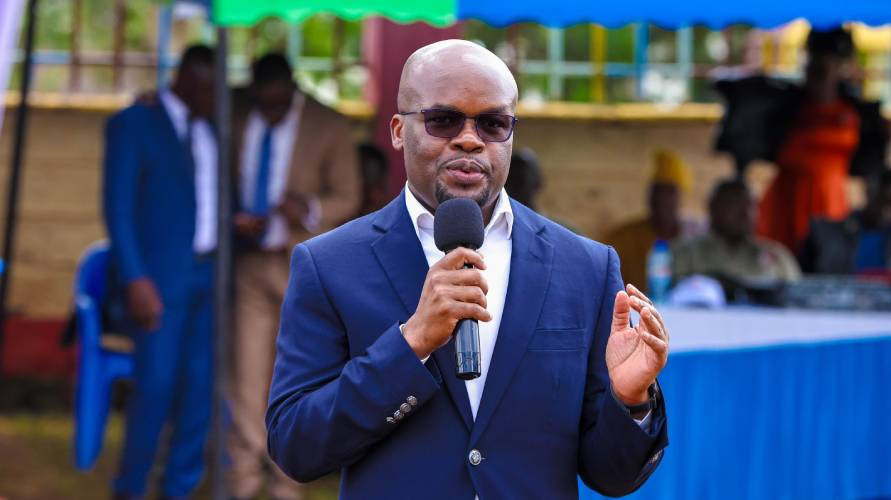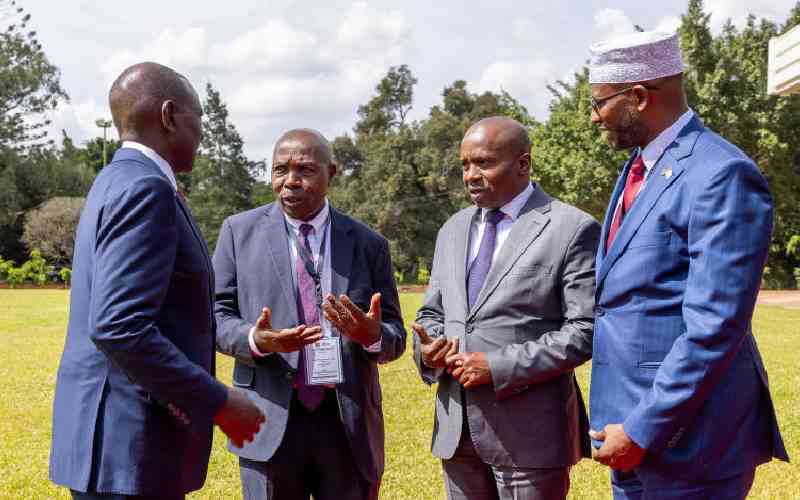 Any visitor to Rongai - better known as ‘Diaspora’ - or even driving on Magadi Road at night cannot miss the waft of a foul smell. You would be forgiven to think that the place is home to a mega sewer treatment plant. Seasonal rivers of filth here flow undisturbed even during the dry season.
Any visitor to Rongai - better known as ‘Diaspora’ - or even driving on Magadi Road at night cannot miss the waft of a foul smell. You would be forgiven to think that the place is home to a mega sewer treatment plant. Seasonal rivers of filth here flow undisturbed even during the dry season.
But with all the growth that Ongata Rongai boasts of, nobody would imagine that there is no sewer system in place. The drainage system is in a deplorable state due to garbage. Desperate landlords and residents are using the cover of darkness to empty raw sewer into the flood drainages by the road. These furrows eventually empty into the rivers that pass through the Nairobi National Park; some into huge ones such as Mbagathi River.
Even in the dry season, the drains flow with dark sewer water, with garbage clogging most parts of the drains. The company tasked with managing water and waste in the town, Oloolaiser Water and Sewerage Company Ltd, confirms that this is raw sewer discharged from thousands of housing units without proper sewerage disposal systems.
Technical Manager Alpha Mosomi cites an example where a landlord, while fixing water pipes to supply water to neighbours, also fixed one that ran straight down to the river.
Sewer pipes
“Our question was who the pipe was supplying with water at the river? True to our suspicion, when we cut the pipe later, we found that it was a channel for raw sewer,” says Mosomi.
While residents and landlords point fingers at the water company, Mosomi disagrees, stating that a number of players are involved in development processes.
He says, “A good example is in issuance of business permits; why can’t the department of public health ensure that they have proper waste disposal systems beforehand?”
Some residential estates have septic tanks which have to be emptied regularly, a cost that estate owners have to grapple with. On average, exhausters cost between Sh10,000 and Sh14,000 depending on the size, with most emptying after every two or three months.
The frequency also depends on the number of households in a particular building and the size of the septic tank itself.
“This is the single most expensive venture which the Government needs to look into because it is the duty of Government to offer sewerage infrastructure,” says the landlord who wishes not to be named.
Way forward
But the landlords, residents and authorities agree that with the damage already done, the way forward would be to seek viable solutions.
But Mosomi argues that to get there, political interference must stop.
“When authorities like public health try to ensure that the anomalies are corrected, politicians keep interfering, which makes implementing a solution somehow difficult,” says Mosomi.
Robert Gathua of Paragon Ltd, which manages some housing estates in Rongai, says the use of exhausters is in itself exhausting and taxing for the home owners.
Stay informed. Subscribe to our newsletter
“We are talking with Oloolaiser Water Company so that a sewage disposal system can be put in place even as the population increases,” he says.
Mosomi agrees that a number of studies have been done on how to solve the crisis moving forward.
He states, “Most of the housing estates in suburbs around Nairobi do not have functional waste disposal systems and even those in existence like Ngong are overwhelmed and costly to maintain, which calls for new ones.”
In providing 135,000 people with water, who are projected to hit 250,000 in the next few years, Mosomi says the company is working on a plan that will give the area proper disposal not only of sewer, but also solid waste.
Soon after taking office, Kajiado Governor David Nkedianye had said some parts of a land that had earlier been earmarked for a sewer system and other social amenities by the previous government had been illegally acquired.
“The issue of the sewer system and solid waste management will be carried out in phases but with different ministries among the local governments. It is a huge task, but it has to be undertaken,” said Dr Nkedianye.
But how did Rongai end up in its current predicament? One of the factors was lack of proper planning, which led to haphazard development because of the nature of land ownership which was essentially freehold. This means that people could construct at their own convenience. All this was done without proper planning.
Population growth
Titus Musungu, a senior physical planner in the Ministry of Lands says provision of not only a sewer system but also other basic amenities is difficult in Rongai.
He attributes this to the spontaneity with which the area has grown as a response to the shortage of housing in Nairobi, which saw people move to closer areas within the metropolitan region.
Unpredictable growth
“People are trying to get housing to bridge the gap that exists within Nairobi and there is no equilibrium between population growth and provision of public utilities,” says Musungu.
Musungu likens the growth of Rongai to amoeba growing in different unpredictable directions; a cancer spreading without control and a blight on the Nairobi Metropolitan area.
He says that solving the problem of Rongai is more difficult than Kibra because Kibra has temporary structures while Rongai has concrete, permanent structures which will involve acquisition by the government since they are owned by individuals.
 The Standard Group Plc is a
multi-media organization with investments in media platforms spanning newspaper
print operations, television, radio broadcasting, digital and online services. The
Standard Group is recognized as a leading multi-media house in Kenya with a key
influence in matters of national and international interest.
The Standard Group Plc is a
multi-media organization with investments in media platforms spanning newspaper
print operations, television, radio broadcasting, digital and online services. The
Standard Group is recognized as a leading multi-media house in Kenya with a key
influence in matters of national and international interest.
 The Standard Group Plc is a
multi-media organization with investments in media platforms spanning newspaper
print operations, television, radio broadcasting, digital and online services. The
Standard Group is recognized as a leading multi-media house in Kenya with a key
influence in matters of national and international interest.
The Standard Group Plc is a
multi-media organization with investments in media platforms spanning newspaper
print operations, television, radio broadcasting, digital and online services. The
Standard Group is recognized as a leading multi-media house in Kenya with a key
influence in matters of national and international interest.

 Any visitor to Rongai - better known as ‘Diaspora’ - or even driving on Magadi Road at night cannot miss the waft of a foul smell. You would be forgiven to think that the place is home to a mega sewer treatment plant. Seasonal rivers of filth here flow undisturbed even during the dry season.
Any visitor to Rongai - better known as ‘Diaspora’ - or even driving on Magadi Road at night cannot miss the waft of a foul smell. You would be forgiven to think that the place is home to a mega sewer treatment plant. Seasonal rivers of filth here flow undisturbed even during the dry season.






